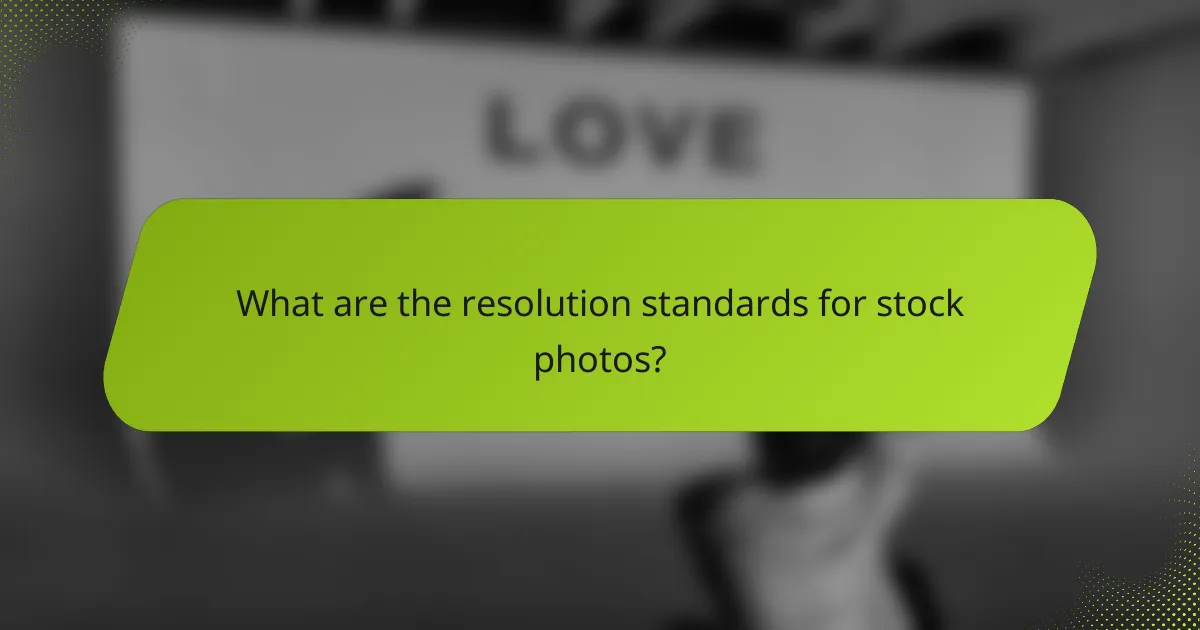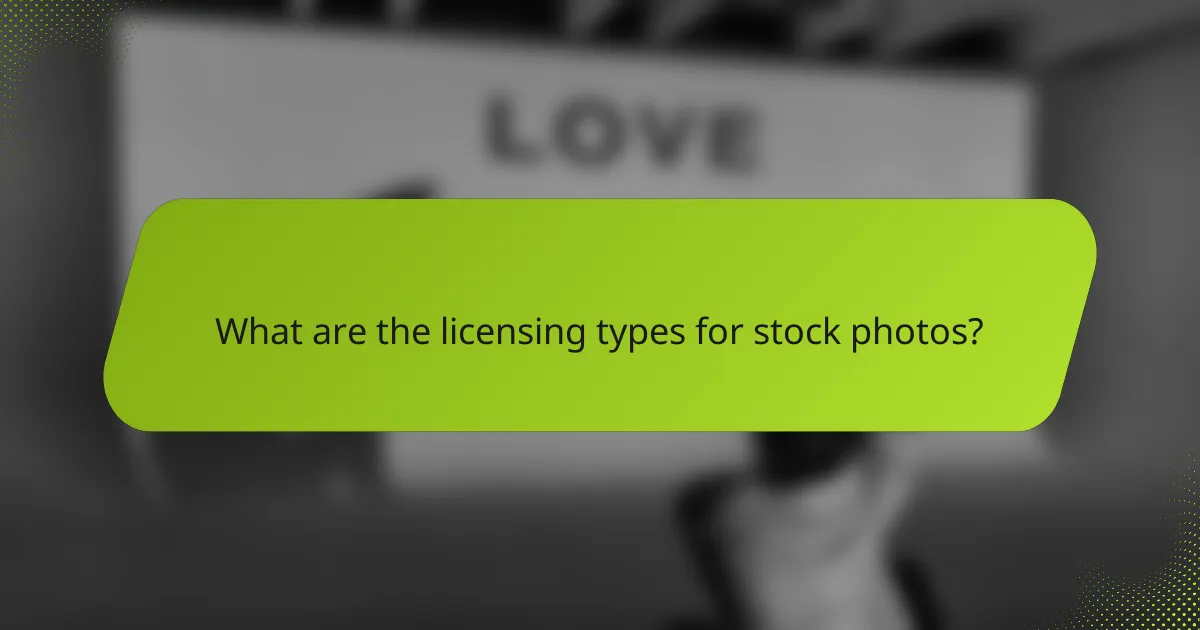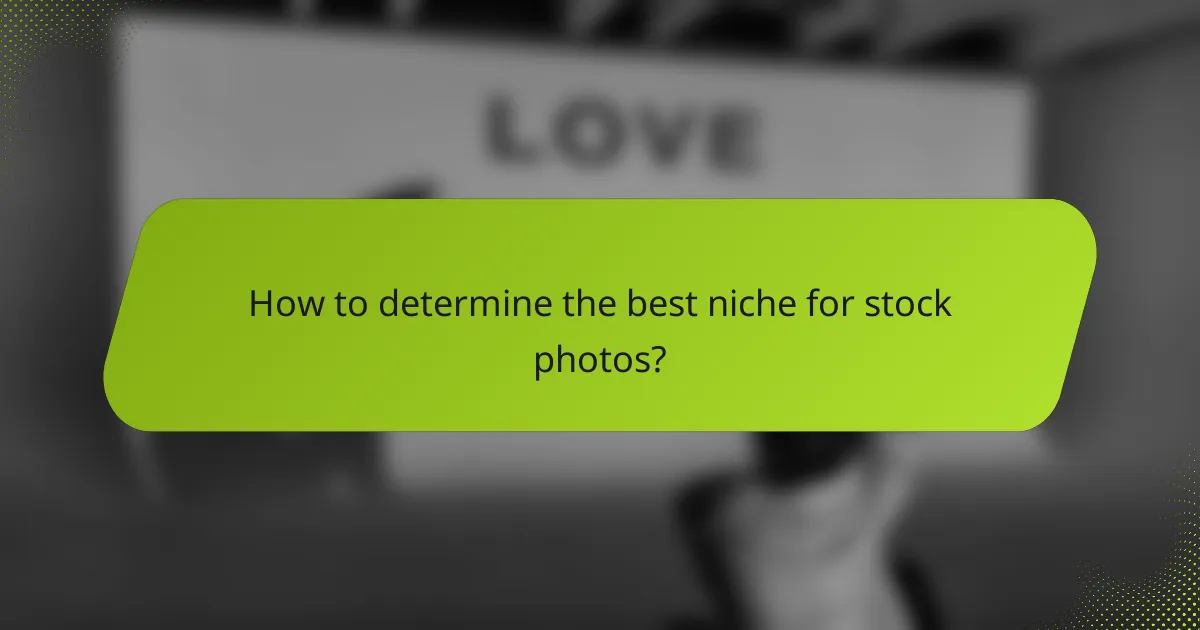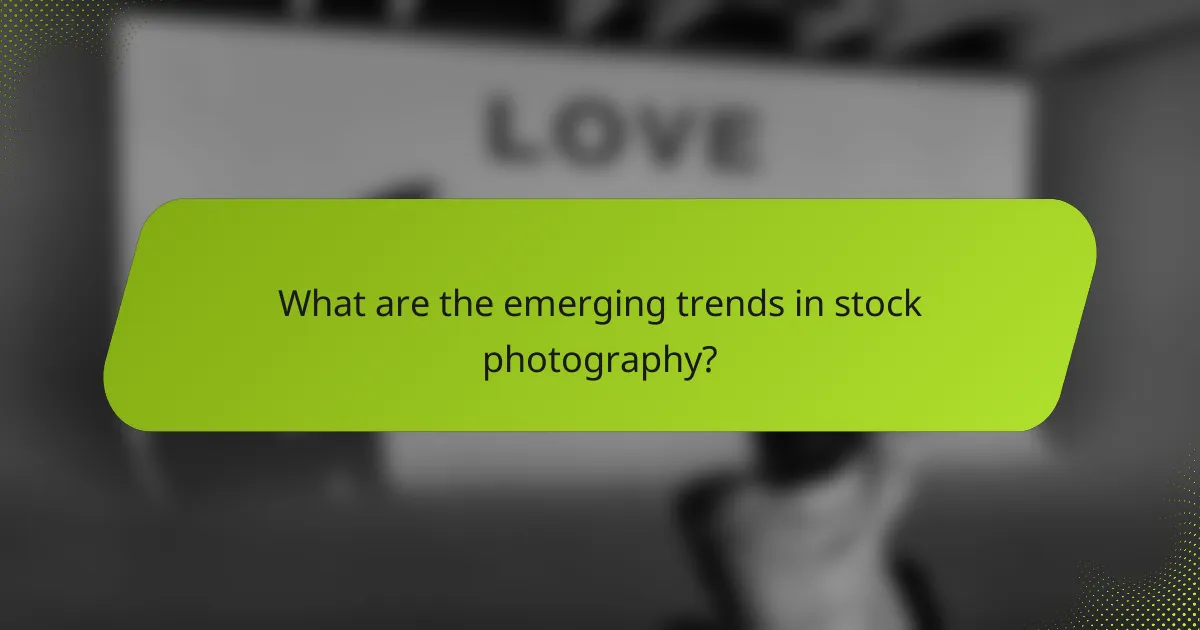When selecting stock photos, it’s crucial to consider resolution, licensing, and niche relevance to ensure the images meet your project’s specific needs. High-resolution images are ideal for print applications, while lower resolutions may suffice for digital use. Additionally, understanding the licensing options available can help you avoid legal issues and ensure proper usage of the images.

What are the best stock photo platforms in the UK?
The best stock photo platforms in the UK provide a variety of high-quality images suitable for different needs, from commercial use to personal projects. Key factors to consider include licensing options, image resolution, and the specific niches each platform serves.
Shutterstock
Shutterstock is one of the leading stock photo platforms, offering millions of images across diverse categories. Users can choose from subscription plans or pay-per-image options, making it flexible for both occasional and frequent users.
When using Shutterstock, pay attention to the licensing agreements, as they vary based on the chosen plan. For commercial use, ensure that the images meet your project’s requirements to avoid legal issues.
Adobe Stock
Adobe Stock integrates seamlessly with Adobe Creative Cloud applications, making it a popular choice for designers and creatives. It offers a vast library of high-resolution images, vectors, and videos.
Adobe Stock operates on a subscription model, allowing users to download a set number of images per month. This can be cost-effective for regular users, but casual users might find it more economical to purchase images individually.
iStock
iStock, a subsidiary of Getty Images, provides a wide range of stock photos, illustrations, and videos. It features both standard and exclusive collections, catering to different budget levels.
iStock offers credit packs and subscription plans, allowing users to choose based on their needs. Keep in mind that exclusive images tend to be more expensive but can provide unique content for your projects.
Getty Images
Getty Images is known for its extensive collection of high-quality editorial and creative images. It is often the go-to platform for media outlets and professionals seeking premium content.
Licensing on Getty Images can be more complex, with options for rights-managed and royalty-free images. Be sure to review the licensing terms carefully to ensure compliance with your intended use.
Depositphotos
Depositphotos offers a large library of stock photos, vectors, and videos at competitive prices. It provides flexible pricing options, including subscriptions and on-demand purchases.
One advantage of Depositphotos is its user-friendly interface and search functionality, which makes finding specific images easier. Consider their credit system if you plan to purchase images sporadically, as it can save you money in the long run.

How to choose stock photos for digital products?
Choosing stock photos for digital products involves understanding resolution, licensing, and niche relevance. These factors ensure that the images you select meet quality standards and align with your product’s target audience.
Consider resolution requirements
Resolution is crucial for ensuring that stock photos look sharp and professional in your digital products. For web use, images should typically be at least 72 DPI, while print products often require 300 DPI or higher.
When selecting images, consider the final output size. For instance, a full-screen background may need a resolution of 1920×1080 pixels or higher, while smaller thumbnails can work with lower resolutions. Always check the specifications of your platform to avoid pixelation.
Evaluate licensing options
Licensing determines how you can use stock photos, and it’s essential to choose the right type for your needs. Common licenses include royalty-free, which allows for multiple uses without additional fees, and rights-managed, which restricts usage based on specific terms.
Be aware of the limitations that come with each license type. For example, some licenses may prohibit commercial use or require attribution. Always read the fine print to ensure compliance and avoid legal issues.
Assess niche relevance
Niche relevance is about selecting stock photos that resonate with your specific audience. Images should reflect the themes, styles, and emotions that align with your product’s message and target demographic.
For example, if your product is aimed at a tech-savvy audience, opt for modern, sleek images that convey innovation. Conversely, a product targeting a wellness audience may benefit from serene, nature-inspired visuals. Tailoring your image choices to your niche enhances engagement and connection with your audience.

What are the resolution standards for stock photos?
Resolution standards for stock photos vary depending on their intended use, primarily for print or web applications. High-resolution images are essential for print materials, while standard resolutions suffice for online content.
High resolution for print
High-resolution stock photos typically have a minimum of 300 DPI (dots per inch), which ensures sharp and clear images when printed. Common dimensions for print images range from 2400 x 3000 pixels to 6000 x 8000 pixels, depending on the size of the printed material.
When selecting images for print, consider the final output size. For example, an 8 x 10 inch print requires at least 2400 x 3000 pixels to maintain quality. Always check the DPI and dimensions before purchasing to avoid pixelation.
Standard resolution for web
Standard resolution for web images is generally around 72 DPI, with dimensions often ranging from 800 x 600 pixels to 1920 x 1080 pixels. This resolution is sufficient for displaying images on websites without significantly impacting loading times.
For optimal web performance, aim for images that balance quality and file size. Compressed JPEGs or PNGs are commonly used formats that maintain decent quality while reducing load times. Avoid using excessively large images, as they can slow down your site and affect user experience.

What are the licensing types for stock photos?
Stock photos typically come with two main types of licensing: royalty-free and rights-managed. Understanding these licensing types is crucial for selecting the right images for your projects while ensuring compliance with usage rights.
Royalty-free licensing
Royalty-free licensing allows users to pay a one-time fee to use an image without incurring additional charges for each use. This type of license generally permits a wide range of uses, including commercial applications, without the need for ongoing royalties.
When using royalty-free images, it’s important to review the specific terms, as some licenses may restrict the number of copies or require attribution. Popular stock photo sites often offer a variety of royalty-free images at prices ranging from a few dollars to several hundred, depending on the image quality and exclusivity.
Rights-managed licensing
Rights-managed licensing is more restrictive and requires users to pay based on specific usage parameters, such as the duration, geographic location, and medium of use. This means that costs can vary significantly based on how you intend to use the image.
With rights-managed licenses, you typically negotiate the terms directly with the image provider, which can lead to higher costs but also guarantees exclusivity for your chosen images. Be sure to clarify all usage rights and limitations before finalizing your purchase to avoid potential legal issues.

How to determine the best niche for stock photos?
To determine the best niche for stock photos, focus on identifying specific audience needs and researching current trends. This approach ensures that your stock images meet market demand and stand out in a competitive landscape.
Identify target audience needs
Understanding the needs of your target audience is crucial for selecting a profitable niche in stock photography. Consider demographics such as age, profession, and interests, as these factors influence the types of images that resonate with potential buyers.
Engage with your audience through surveys or social media to gather insights on their preferences. For instance, businesses in the wellness sector may seek images that convey relaxation and health, while tech companies might prefer images showcasing innovation and modernity.
Research trending topics
Staying informed about trending topics can significantly enhance your stock photo niche selection. Utilize tools like Google Trends or social media platforms to identify popular themes and subjects that are gaining traction.
For example, during seasonal events like holidays or major sporting events, there is often a spike in demand for related imagery. Additionally, emerging trends in areas like sustainability or remote work can provide new opportunities for stock photographers to capture relevant content.

What are the emerging trends in stock photography?
Emerging trends in stock photography reveal a shift towards more authentic, niche-specific, and AI-generated images. These trends reflect changing consumer preferences and advancements in technology, influencing how stock photos are created and utilized.
Increased demand for authentic imagery
There is a growing preference for stock photos that depict real-life scenarios and diverse subjects. Authentic imagery resonates more with audiences, as it feels relatable and genuine, often leading to higher engagement rates.
Photographers and stock agencies are responding by curating collections that feature candid moments and diverse representation. This trend encourages brands to connect with their audiences on a more personal level, enhancing their marketing efforts.
Growth of niche-specific collections
Niche-specific collections are becoming increasingly popular as businesses seek images that align closely with their unique branding and target markets. Stock photo platforms are now offering tailored collections that cater to specific industries, interests, or demographics.
For example, a health and wellness brand may look for images that reflect fitness, nutrition, or mental well-being. By focusing on niche markets, stock photo providers can better serve clients looking for specialized content that stands out from generic offerings.
Integration of AI-generated images
The integration of AI-generated images is transforming the stock photography landscape, providing new creative possibilities. AI tools can generate unique visuals based on specific prompts, allowing for rapid content creation that meets diverse needs.
While AI-generated images can save time and costs, users should be cautious about licensing and originality. Ensuring that AI-generated content adheres to copyright regulations and is suitable for commercial use is essential for avoiding legal issues.

How to effectively use stock photos in marketing?
To effectively use stock photos in marketing, select high-quality images that align with your brand and message. Consider factors like resolution, licensing, and niche relevance to ensure the visuals enhance your marketing efforts.
Resolution
Resolution is crucial when choosing stock photos, as it affects image clarity and professionalism. Aim for high-resolution images, typically at least 300 DPI for print and 72 DPI for web use, to ensure your visuals look sharp across different platforms.
When selecting images, consider the intended use. For social media, images may need to be optimized for various dimensions, while print materials require larger files. Always check the resolution specifications provided by the stock photo provider.
Licensing
Understanding licensing is essential to avoid legal issues when using stock photos. Stock images typically come with different licenses, such as royalty-free or rights-managed, which dictate how you can use them.
Royalty-free licenses allow for broader usage without ongoing fees, while rights-managed licenses are more restrictive and may require additional payments for specific uses. Always read the licensing terms carefully to ensure compliance and avoid potential copyright infringements.
Niche
Selecting stock photos that fit your niche can significantly enhance your marketing impact. Images that resonate with your target audience can create a stronger connection and convey your brand message more effectively.
Consider using niche-specific stock photo sites that cater to particular industries or themes. This can help you find images that are more relevant and engaging for your audience, ultimately improving your marketing campaigns.



